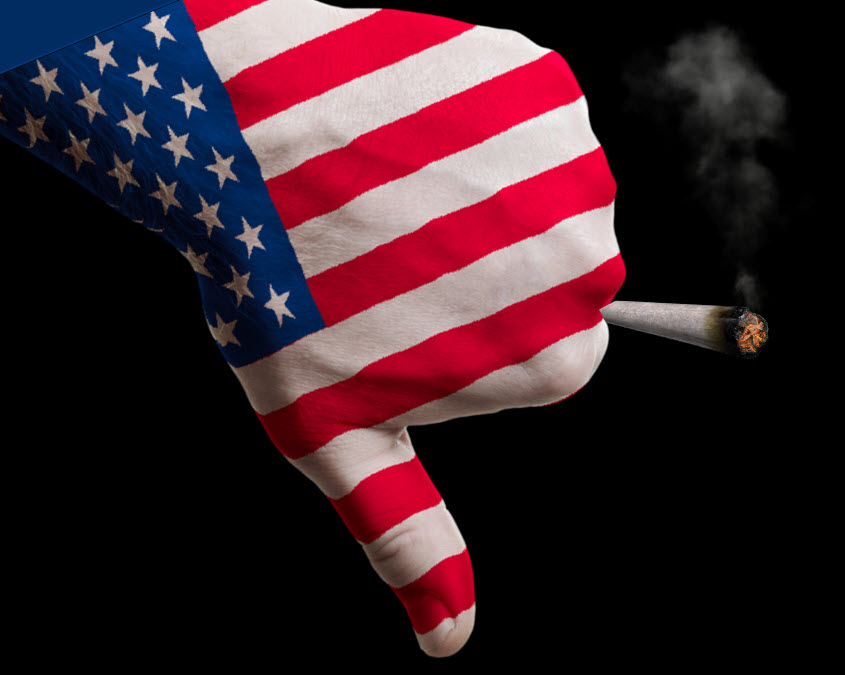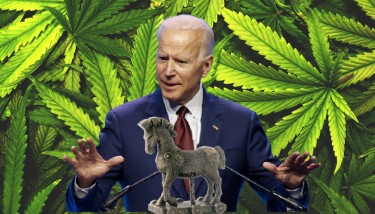
How the federal government is systematically trying to kill the cannabis industry
How the federal government’s inability to legalize cannabis is killing the industry
Over the past decade, the movement to legalize cannabis in the United States has gained significant momentum. With 38 states having legalized medicinal cannabis and 22 states allowing recreational use, it is clear that public opinion is shifting towards cannabis legalization. However, despite progress being made from state to state, the federal government’s continued cannabis prohibition has created numerous challenges for the industry.
In places where cannabis has been legalized, like Canada and California, we see some problematic issues. These problems stem from over-regulation, which can lead to oversupply, bloated black markets, high operating costs and lack of access to banking services. These issues are hampering the growth of the cannabis industry and stifling the benefits that legalization can offer.
While legalization of cannabis at the state level has been successful, federal government inaction and political discourse are limiting the industry’s potential. In this article we will examine the issues facing the cannabis industry in multiple markets and what needs to happen for the industry to thrive.
A recent Fortune article titled “Marijuana Growers Find Between a Rock and a Hard Place as They Face Oversupply and Interstate Trade Troubles: ‘I’m Tired of Running a Failing Business'”” addressed the above issues. If you want to read the full article, you can check it out here; however, below I will give a brief synopsis of what it said.
The marijuana industry is facing a “failed economics” in legal cannabis. On the West Coast, which was the center of marijuana production in the United States, excess production cannot cross state lines due to federal marijuana prohibition.
Prices have plummeted, causing problems with the legal marijuana industry’s profitability. Licensed growers are feeling the strain of Washington state’s 37% cannabis tax and are left with virtually no profit margin.
Marijuana companies can’t get credit or credit because of the banking restrictions, and legalizing the drug for national use by companies will be a political challenge. The cannabis industry is exploring the possibility of President Joe Biden’s administration allowing the trade in marijuana between states that have legalized it.
This would help West Coast states feed the rest of the country thanks to the favorable climate and cheap, clean hydroelectric power for indoor growing.
Although the Washington state legislature has approved a “trigger law” that allows the governor to enter into an interstate cannabis trade agreement if the federal government allows it, experts don’t think the policy will go as far as allowing interstate trade .
Contributing to the flooding in Oregon and Washington is the fact that the states have licensed so many growers. The original idea was to ensure sufficient supplies to the legal market and lower prices to compete with the black market. But Oregon has hundreds more licensed growers than Washington, leading to oversupply.
Marijuana prices are so cheap that it’s difficult for the industry to remain sustainable, and some growers are resorting to channeling product to the black market out of states just to stay afloat.
Here are the top reasons the cannabis industry is struggling right now and the impact of non-regulation and over-regulation:
-
Licensed growers in some US states have been forced to sell their produce on the black market to make ends meet. (side effects of over-regulation)
-
Big cannabis companies like MedMen and Curaleaf are facing financial difficulties. (side effect of the lack of regulation)
-
The west coast’s legal marijuana industry is struggling with oversupply and a failing economy. (Mixture of over- and under-regulation)
-
Producers are hampered by the federal marijuana ban and state regulations that prevent interstate trade. (Cause)
-
Some licensed growers complain that high cannabis taxes leave producers with virtually no profit margins. (Cause)
-
Legislators in some states are seeking approval of interstate cannabis trade agreements. (Action)
-
The cannabis glut in Oregon, Washington, and Colorado is the result of the states licensing too many growers. (partly true)
-
Cannabis product prices have plummeted due to oversupply, making it difficult for companies to remain profitable. (Effect)
-
Keeping the industry sustainable is a major challenge due to low prices and oversupply. (TRUE)
REMARKS:
There are a few observations in the article that I don’t necessarily agree with, such as the reason for the problem that the state provides too many licenses for cultivation. While that may be true under the current circumstances, it is only due to a federal blockade on interstate commerce making it so.
Not all states in the US would be optimal for growing cannabis. Some states have a geographic advantage, meaning that in a federally legalized scenario, having a surplus of cannabis is a win for Oregon. The mere fact that legal growers are forced to sell illegally to keep themselves afloat should be more than enough proof of this fundamental truth.
Additionally, a cap on licenses means a cap on entrepreneurship and growth. Eventually some groups would take over all the licenses and you would be limited to innovating on those sentence groups.
The cannabis industry in the United States faces significant challenges, and the government is responsible for most of them.
One of the main issues is that interstate trade in cannabis is illegal, meaning states cannot trade with each other. This has led to oversupply and shortages in some areas, causing instability in the market.
Although both Canada and Mexico have legalized cannabis, the federal government has been reluctant to follow suit, hampering progress.
It’s frustrating for those in the industry who are trying to make a living and provide safe, quality products to consumers. Government reluctance to legalize cannabis is making it difficult for companies to operate and stifling growth opportunities. This is of particular concern as the industry has the potential to create jobs and generate revenue for the economy, especially at a time of such high inflation.
The reasons for the government’s opposition to cannabis legalization are not entirely clear, but it may be due to their financial allegiance to powerful lobbies such as the pharmaceutical industry, the prisons industrial complex and law enforcement agencies.
The pharmaceutical industry in particular has a lot to lose if cannabis becomes a mainstream alternative to prescription drugs. The government’s inability to legalize cannabis could be a result of its desire to protect this industry’s profits, even if it means denying patients access to alternative treatments. And since the pandemic, I think most people agree that these industries have politicians by the balls.
Similarly, both the industrial prison complex and law enforcement benefit from the criminalization of cannabis. Many people have been imprisoned for nonviolent drug-related offences, disproportionately affecting minorities and low-income communities. These incarceration numbers support their reports, which secure their funding. If they removed cannabis from their list of crimes, they would actually have to stop crime – which would be too difficult and would hurt their bottom line.
Some politicians are proposing policy changes that favor big industry, exacerbate oversupply problems and create an unlevel playing field. For example, a federal tax on cannabis would make it more expensive for consumers and hamper small business growth. Imagine having to pay 50% more tax on your weed. Where do you think you would buy your weed? The pharmacy or the guy down the street who has killer weed?
Some regulations favor large companies over small companies, further compounding the oversupply problem. These include limited licensing systems, over-taxation and regulation.
From this we can only conclude that the government is responsible for most of the challenges facing the cannabis industry in the United States today. And as we try to debate how to fix the complex relationship between federal and state laws, regulations, etc., we have to ask ourselves if we need to “fix it all.” Perhaps simply paring it down to the simplest, most effective remedy is the way to go?
The illegal interstate trade in cannabis limits growth opportunities and creates instability in the market. This is definitely only true because there are gatekeepers with full-auto rifles and an army ready to lock you up if you break the rules.
The fact is that the solution is simple. We need fast action on federal legalization. We need to stop thinking about justice and make it accessible. An oversupply of licenses will be regulated in an open marketplace.
Make it easy for people to grow and sell, and establish regulations and controls for interstate and international trade. In this way you give the growers a chance to establish themselves, the market creates opportunities for small and large companies. But only if the government stops meddling
THE FEDERAL BOSS OF WEED, READ MORE…

WHAT IS BIDEN’S TROJAN HORSE FOR CANNABIS LEGALIZATION?

Post a comment: